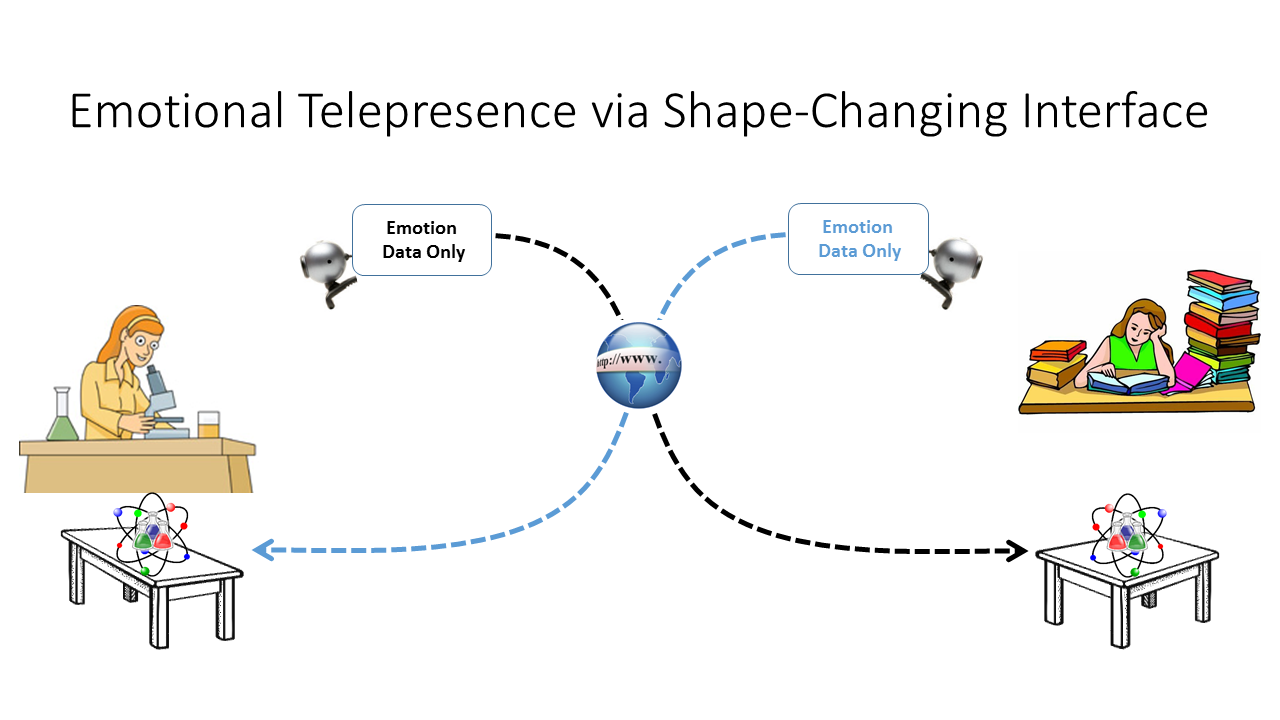We are spending far more hours with our computers and smartphones than with people. Our digital experiences are very often devoid of emotions. Even when we communicate with people through non-direct means, most of the emotions are lost in cyberspace. And thus, the most effective way for emotional expression still remains face-to-face communicating. What if we could change that paradigm. What if we had a way to constantly be emotionally connected with all the people we care about, without having to meet each of them directly every time we wished to find out how they are doing.
What if some of the objects that we use every day served as interfaces that reflected the emotional states of the person we associate with a particular object. Say for example the mug you are holding was not just a mug but was rather an interface that changed its shape, color, or other property in a way that indicates to you how the person you associate with this mug is feeling. Or what if the furniture, or any other object changed one or more of its properties to reflect one’s emotions.
To build an emotional telepresence system, we could use a webcam that captures a person in their natural environment, and then process that webcam information with Affectiva’s emotion tracking software, and extract only the emotion content and discard the video content (thereby maintaining the user’s privacy; of course the user could choose how or what they wish to share always, but the maximum they could share is the emotion data). The emotion data is then sent to the cloud, and a shape-changing device at some other spatial and possibly temporal location changes its properties in response to the emotional content. In other words, we are mapping emotional content into dynamic change of shape. The question that needs to be asked, though is what mapping scheme should we use between emotion and shape; and what kind of shape-changing device should we use? Pip Mothersill explored the relationship between form and emotion in her Master’s thesis, thus we could refer to that document for guidance.

